New research has revealed that Escherichia coli (E. coli), a bacterium that normally lives in the human gut, can spread through populations at a rate comparable to the swine flu.
For the first time, researchers from the Wellcome Sanger Institute,…

New research has revealed that Escherichia coli (E. coli), a bacterium that normally lives in the human gut, can spread through populations at a rate comparable to the swine flu.
For the first time, researchers from the Wellcome Sanger Institute,…
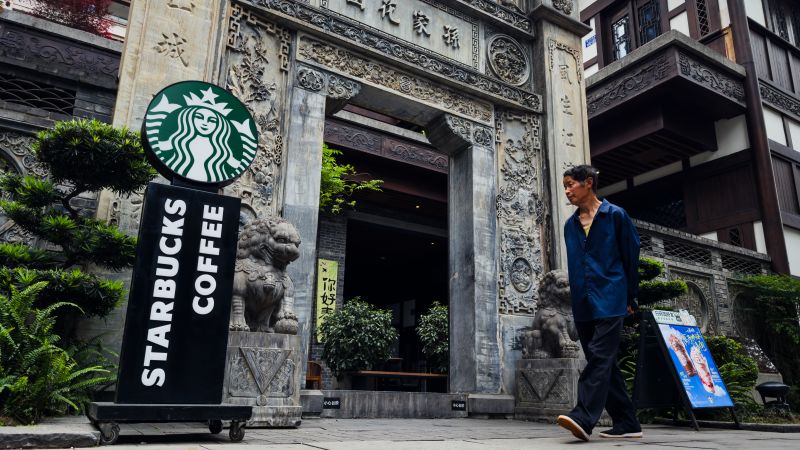
Beijing/Hong Kong
—
Nearly three decades ago, Starbucks opened its first outlet in China with much fanfare, involving a troupe performing a traditional “golden lion” dance and eager customers trying cappuccinos made with steaming espresso machines.
The entry of the American brand helped spur the rise of a thriving coffee culture among the burgeoning middle class of a country that traditionally drank tea, and Starbucks soon became a symbol of Western influence in a more affluent China.
At one point the Seattle-founded coffee giant was opening a new store every 15 hours in China as it rode the wave of the country’s economic boom –– making the market a cornerstone of the US company’s global strategy.
But that’s all about to change, with Starbucks announcing on Monday that it will sell the controlling stake of its operations in the world’s second largest economy to a Chinese investment firm.
Under the deal, Boyu Capital will hold up to a 60% interest in Starbucks retail operations in China of over 8,000 outlets, with the coffee chain retaining a minority 40% stake and continuing to license the Starbucks brand and intellectual property to the new entity.
For Starbucks patrons at an upscale mall in Beijing’s central business district – the same complex where the company first opened its doors in China in 1999 – the news doesn’t come as a complete surprise.
“When Starbucks first came to China, it positioned itself as an accessible luxury, something everyone could enjoy,” said Si Huazheng, a 28-year-old in the car sales industry who was working from his laptop at the shop on Tuesday morning.
“But now, with so many domestic coffee brands popping up, the landscape has changed,” Si added.
Starbucks is beset by a myriad of challenges in China, including fierce domestic competition and a more cost-conscious consumer base, which also includes a cohort of young people who prefer to back homegrown brands.
Dozens of beverage chains have exploded onto the scene in recent years offering coffee at steep discounts.
At the top of that list is Luckin Coffee, a Chinese brand that has overtaken Starbucks in both sales and store count, boasting three times as many outlets in the country and coffee priced as low as one-third of Starbucks’ offerings.
Luckin rose to prominence within just a few years after its founding in 2017, appealing to the country’s younger generation, and now it’s also challenging Starbucks on its home turf, opening its first outlets in New York City in June.
The beverage market in China today is nothing like the one Starbucks entered 26 years ago, when China’s economy was just beginning to take off, lifting an estimated hundreds of millions of Chinese into the middle class.
Back then, there was little mainstream coffee drinking culture to speak of, and the brand was one of a handful of American food and beverage chains vying to establish themselves in country after China’s opening-up in the early 1980s.
Starbucks’ success was forged on the back of a growing demand for Western luxuries, as well as a strategy of adapting products for the market –– to appeal to customers beyond China’s top-tier cities.
Seventy-year-old retiree Liu Zishang recalls when the outlet first opened its doors in Beijing and said it took some time for the Chinese people, like him, to get used to the taste of coffee.
“Through my spending, I get to feel the culture of Starbucks, and that’s when I started thinking, ‘Hey, this is good,’” said Liu, who was relaxing at a Starbucks in Beijing on Tuesday morning, while waiting for his grandson to finish ice skating in the same mall complex.
But he acknowledged challenges that the outlet is facing could be linked to the country’s sluggish consumption.
“The economic situation in China is declining, and the number of wealthy people is shrinking.” Liu said. “With the pressure of buying homes, cars, and loan payments, it’s probably weighing on their spending.”
China’s weak consumer demand, a result of the country’s years-long property downturn and high youth unemployment rate, has made the country’s 1.4 billion people less willing to spend.
In fiscal 2025, Starbucks reported a 1% decline in same store sales in China, weighed down by 5% decrease in the average amount of money a customer spends per transaction.
Starbucks has also come under intense competition from the surging popularity of tea drinks chains like Mixue Bingcheng, ChaGee and HeyTea.
Mixue, which has overtaken McDonald’s and Starbucks as the world’s largest food and beverage chain by number of stores, offers its signature drinks and various coffee options for between the price of 2 to 8 yuan (30 cents to $1.20). Starbucks’ new majority owner in China, Boyu Capital, has also backed Mixue in its initial public offering earlier this year.
Rivals ChaGee and HeyTea, meanwhile, target fast changing taste buds of young Chinese consumers, with unique tea and drinks offerings like Jasmine green milk tea and grape-blended tea with Cheese foam.
The US-founded coffeeshop does still have appeal for its atmosphere and perception as a “high-end brand,” according to Carrie Chen, 28, who works in finance and frequents Starbucks three to four times a week.
“If you meet clients or chat with friends at Starbucks, it shows that you value the occasion,” said Chen.

But Chen, who was sipping on a hazelnut toffee latte while taking an online course at the shop, also said Starbucks gives the impression it is “playing it safe” with its flavors and offerings in the current market.
When asked about Starbucks’ divestment in China, Chen said the period of Starbucks’ rapid growth in the country may have already passed, but a Chinese partner could potentially “elevate Starbucks to a higher stage.”
Starbucks’ decision to divest in China is the result of a languishing Chinese business strategy, as well as intense price competition and an interest from consumers in supporting domestic brands, said Jin Lu, a public affairs expert who has worked with international brands in China for decades.
“I believe it is yet another quick-fix and only will help the company in the near term,” he said.
The new joint venture will face “tough battles” ahead, though the partnership would be able to bolster Starbucks’ competitiveness, said Dan Su, a Morningstar analyst.
“Menu innovation and digital transformation are necessary in the coming quarters to reassert Starbucks’ position against competing coffee, specialty tea, and other local beverage chains,” Su wrote in a Tuesday note to clients.
Many of Starbucks’ problems in China are identical to those it faces all over the world – particularly in its home market. In North America, the Seatle-based beverage company is getting squeezed by independent coffee shops and growing rivals like Blue Bottle. Some American customers are also shunning Starbucks for its relatively high prices, compared to McDonald’s and other less expensive chains like Dunkin’.
Together, they underscore the struggles Starbucks has faced in recent years, following a series of strategy mishaps that resulted in a leadership shake-up and the appointment of Brian Niccol as CEO last year. In a bid to deliver a quick turnaround, the new top executive initiated a plan to close hundreds of stores, or about 1% of its locations, in the United States and Canada.
One year after taking the helm, Niccol’s restructuring plan – including menu pare-back as well as store closures and remodeling – has shown mixed results. Last week, Starbucks reported a 3% annual increase in revenue and 1% decline in sales for locations open at least a year for its fiscal year 2025 ending in September.
The joint venture announced Monday for Starbucks’ China business followed a year-long search for a local partner, with Niccol believing a strategic partner could accelerate growth in its most important foreign market.
“We see a path to grow from today’s 8,000 Starbucks coffeehouses to more than 20,000 over time,” he said in a company blog post about the Boyu Capital partnership.
Starbucks expects the total value of its China retail business to exceed $13 billion, according to the statement.
Already, the divestment news is stirring up some excitement on the Chinese internet, with some netizens wondering if Starbucks may join competitors Luckin Coffee and others in offering more affordable drink options.
“Normally, I drink Luckin because Starbucks is just too expensive,” one person wrote on social media Weibo.
“One cup of Starbucks costs me enough to buy three or four cups from Luckin.”

With the PGA TOUR Fantasy Game presented by PGA TOUR Superstore concluding for the season at the TOUR Championship and set to return for the start of 2026, for the seven FedExCup Fall events, fans of PGA TOUR betting can now see tips and picks…

Sign up here.
Google has denied any wrongdoing throughout the closely watched litigation.
Under the new proposal, Google would allow users to more easily download and install third-party app stores that meet new security and safety standards.
Developers will also be allowed to direct users to alternative payment methods both within apps and via external web links. Google said it would implement a capped service fee of either 9% or 20% on transactions in Play-distributed apps that use alternative payment options.
Tuesday’s court filing from Google and Epic asked Donato to modify his injunction, while keeping many parts of it intact.
Google faces other lawsuits from government, consumer and commercial plaintiffs challenging its search and advertising business practices. It has denied violating state and federal laws in those cases.
Reporting by Mike Scarcella; Editing by Muralikumar Anantharaman and Thomas Derpinghaus
Our Standards: The Thomson Reuters Trust Principles.

A research team at the University of Missouri has made a discovery that could transform how glaucoma is detected and treated. Glaucoma, a major cause of irreversible blindness in older adults, often goes undiagnosed until significant vision loss…
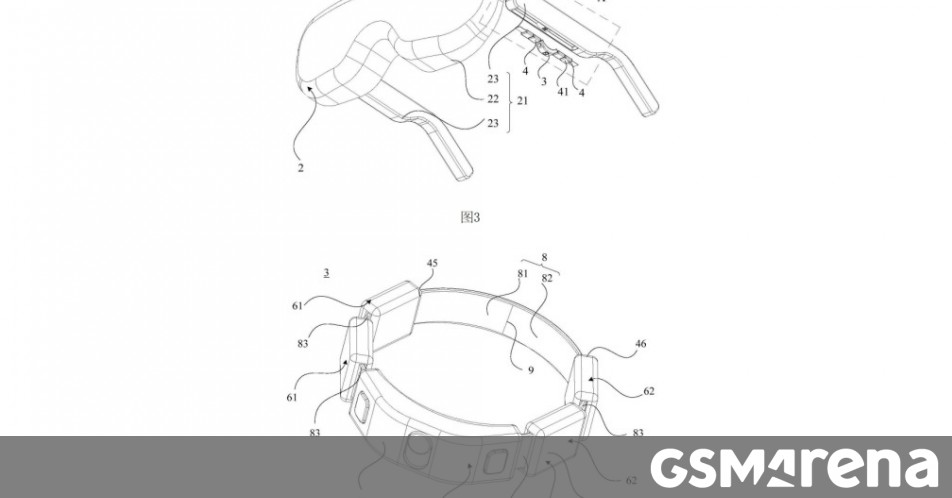
According to a new patent application, Huawei might be working on its own pair of AR/VR glasses. These come with a pretty innovative removable strap that turns into a ring, which you can use to control the user interface of the glasses…
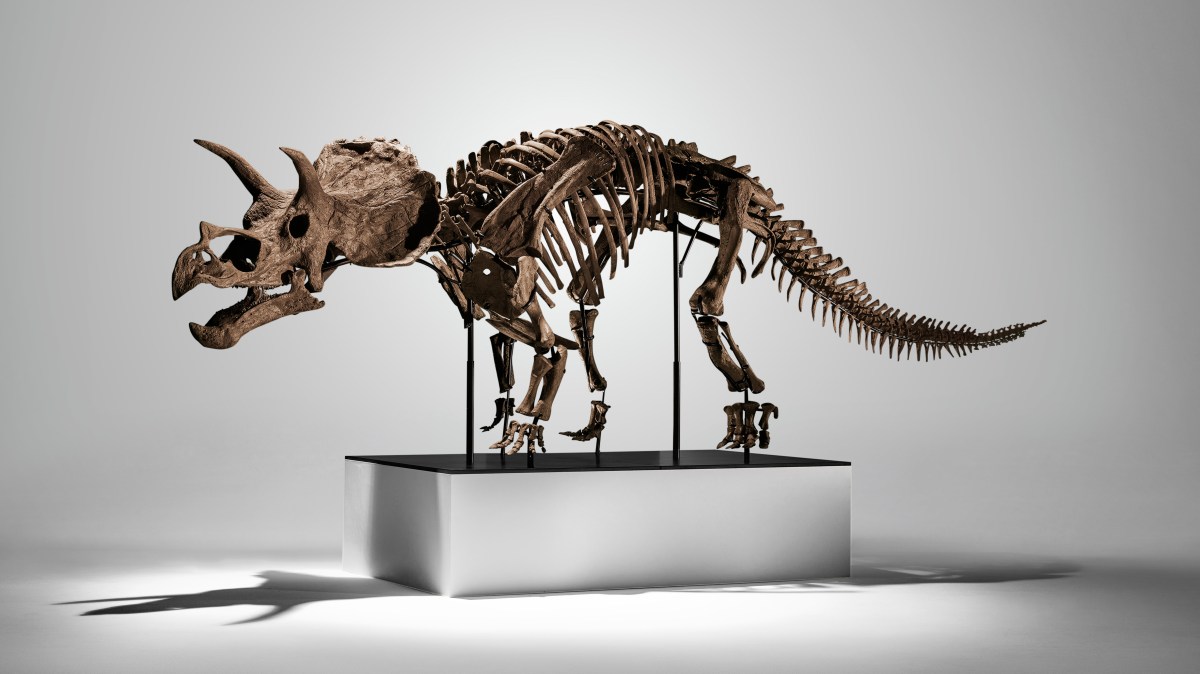
If the word thunderbolt conjures up images of the celestial weapons forged by the Cyclopes for Zeus to hurl at the Titans to gain omnipotence, you may be surprised to hear that it will shortly be possible to bid for one.
On the evening of November…
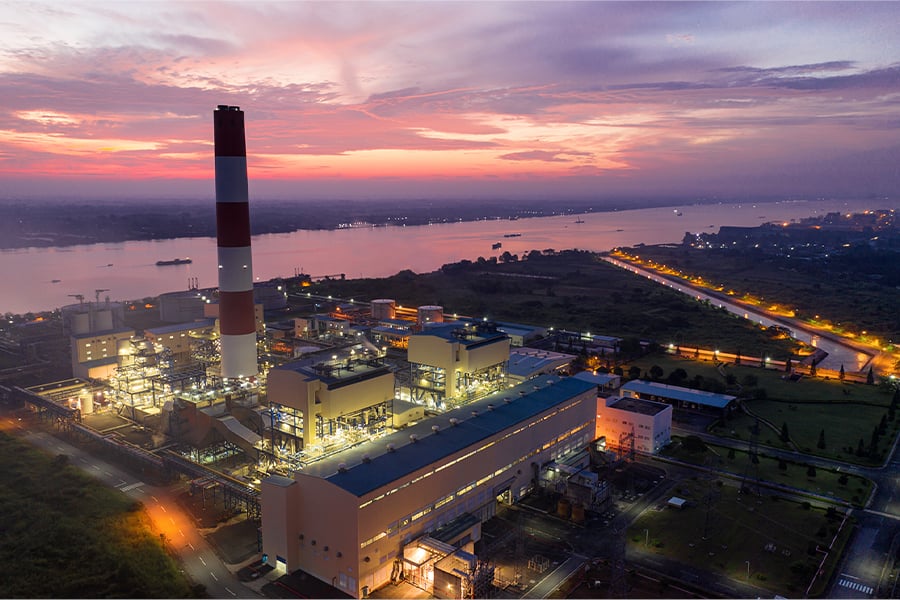
O Mon 1 Thermal Power Plant (Photo: EVNGENCO2)
Tokyo, November 5, 2025 – Mitsubishi Power, a power solutions brand of Mitsubishi Heavy Industries, Ltd. (MHI), has received a contract to support the oil-to-natural gas fuel conversion project at the O Mon 1 Thermal Power Plant in Can Tho in southern Vietnam.
Mitsubishi Power will provide the main equipment, such as the gas burners for the boiler at the core of the system, leveraging its technological capabilities as the OEM (original equipment manufacturer) of the existing boiler to carry out the fuel conversion, and contribute to reductions in CO2 emissions. In addition, Mitsubishi Power will install a selective catalytic reduction (SCR) system to detoxify the NOx (nitrogen oxides) contained in exhaust gases, allowing the plant to meet stricter environmental regulations in the future.
The O Mon 1 Thermal Power Plant comprises Units 1 (330 megawatts (MW)) and Unit 2 (330 MW), which started operation in 2009 and 2015, respectively. The total output is 660 MW, with the existing main equipment provided by Mitsubishi Power.
The fuel conversion project is being conducted by Power Generation Corporation 2 (EVNGENCO2), a part of Vietnam Electricity Corporation (EVN) Group. The contractor for engineering, procurement, and construction (EPC) is a consortium of LILAMA Corporation, a construction company under Vietnam’s Ministry of Construction, and Power Generation Corporation 3 (EVNGENCO3), also part of EVN Group. Mitsubishi Power received the contract for the main equipment from this consortium. Mitsubishi Power Asia Pacific Pte. Ltd., a part of MHI Group based in Singapore, will carry out the EPC engineering support and dispatch personnel to provide technical assistance.
Commenting on the contract award, Makoto Fujita, Senior General Manager, Steam Power Business Division, Energy Systems at MHI, said, “Since the start of operations for Unit 1 in 2009, the O Mon 1 Thermal Power Plant has played an important role in the development of the Mekong Delta region. As the OEM of the existing power plant, we are extremely proud to be able to contribute to the stable supply of energy and decarbonization in Vietnam through our participation in this fuel conversion project. We will devote our full effort to completing this project, and provide support for the long-term, stable operation of the plant.”
In August this year, Mitsubishi Power received a contract to supply two advanced J-Series Air-Cooled (JAC) gas turbines as the core equipment for the O Mon 4 Thermal Power Plant, a gas turbine combined cycle (GTCC) facility with a designed capacity of 1,155 MW, which is adjacent to the O Mon 1 Thermal Power Plant. The project is scheduled for completion in 2028. Vietnam has formulated the Power Development Plan VIII (PDP8), which calls for diversifying the energy mix, reducing coal dependency, and expanding natural gas and renewable energy. Mitsubishi Power, in addition to providing GTCC technology for the O Mon 4 Thermal Power Plant, will further strengthen its support for Vietnam’s energy plan by providing boiler fuel conversion technology for the O Mon 1 Thermal Power Plant, contributing to Vietnam’s national target of achieving net zero emissions by 2050.
Akihiro Ondo, CEO and Managing Director of Mitsubishi Power Asia Pacific Pte. Ltd., said, “Vietnam boasts the highest real GDP growth rate among the ASEAN-5 nations. We are committed to contributing to Vietnam’s economic development by leveraging cutting-edge technology and providing meticulous services.”
Mitsubishi Power will further enhance its efforts for the widespread adoption of technologies with high performance and reliability, contributing to the stable supply of electric power essential for economic development around the world, and supporting the conservation of the global environment by promoting energy decarbonization.
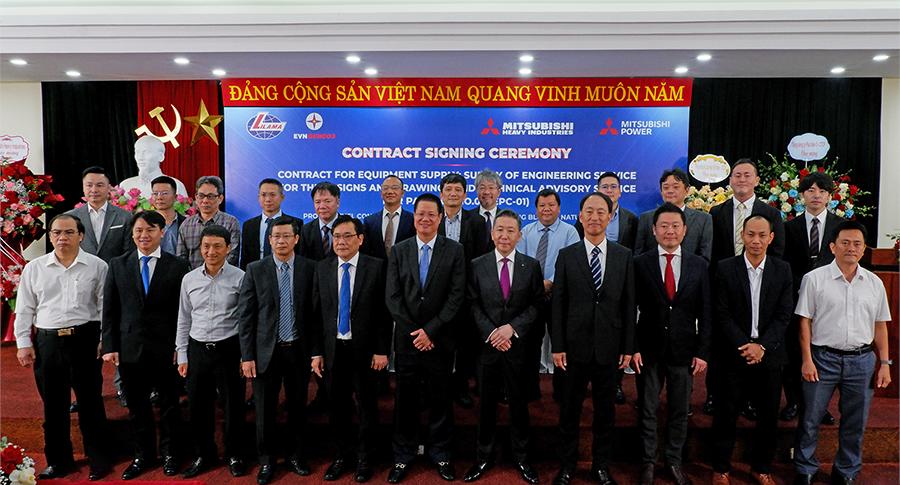
Group Photo at the Signing Ceremony

Jurong Island has traditionally relied on fossil fuels to generate the required power for the production of petroleum products, polymers and refineries, alongside other industries, that have made the island an industrial powerhouse for Singapore. Close to 300 hectares (ha) will be allocated for new energies, such as hydrogen-ready natural gas, ammonia and biogas.
The government has also announced that Singapore will build a 700-megawatt (MW) data centre park on Jurong Island, which will be designed to meet efficiency standards, adopt advanced cooling systems and use green energy sources.
William Stroll, an expert in energy projects at Pinsent Masons, said: “Following the lifting of the moratorium on new data centres in 2022, we’ve seen cautious growth of around 80MW of new capacity approved under strict sustainability criteria.”
“The announcement of 20ha on Jurong Island, roughly the size of 25 football fields, for a low-carbon data centre park marks a significant shift. Co-locating data centres with power-hungry, performance-driven workloads matching them to the availability of green energy sources, including four hydrogen-ready power plants, signals a bold step toward sustainable digital infrastructure, and meeting the fast-growing demands,” he said.
“With recent assessments highlighting the sector’s economic contribution, this move is a welcome boost for Singapore’s digital and green ambitions.”
Singapore remains Southeast Asia’s largest data centre hub, with over 1061MW of capacity currently in operation. The recently established Singapore–Malaysia Data Centre Economic Zone represents a strategic and pragmatic partnership, allowing Singapore to maintain its role as the “hub of the digital infrastructure wheel”, while leveraging Malaysia’s land and energy availability to fuel the next phase of regional growth.
Tan See Leng, Singapore’s minister of energy, science and technology, stated that Jurong Island would be a global test bed for new low-carbon and technologies.
Nicholas Hanna, an expert in technology ventures at Pinsent Masons, said: “The required energy consumption of the newly announced data centre park, along with the commitment that it must meet standards and predominantly utilise green energy, raises some possible challenges about where the power generation will come from, how it will be distributed, and how to compete against neighbouring countries on price. Singapore, as a nation, is no stranger to accepting challenges and turning them into world class solutions. This should be no different.”
“Large, hyperscale data centres can have power demands of more than 100MW, which will require a significant expansion of power generation,” he said.
“This is an opportunity for businesses looking to continue to expand their footprint in Singapore.”
Roughly a third of Singapore’s greenhouse gas emissions are from the refining and petrochemical industries, and the country has committed to reducing greenhouse gas emissions by between 45 million and 50 million tonnes by 2035, in line with reaching net zero emissions by 2050.
David Clinch, an expert in energy infrastructure at Pinsent Masons, said: “Singapore is projecting forward and further innovating for the next phases of the development of Jurong Island, whilst taking into account how that interacts with the government’s sustainability targets. This is another exciting opportunity for businesses to be part of that development and work with the government to achieve those targets.”
Mark Tan, an expert in commercial law at Pinsent Masons, said: “Jurong Island’s upcoming data centre project marks a pivotal step in Singapore’s digital and sustainability journey.”
“Designed to deliver up to 700MW of capacity with hydrogen-ready power and advanced tropical cooling, it appears to set a new benchmark for low-carbon infrastructure,” he said.
“This initiative not only strengthens Singapore’s AI and cloud capabilities but also creates further engineering and technology jobs, reinforcing Singapore’s position as a global hub for green innovation.”